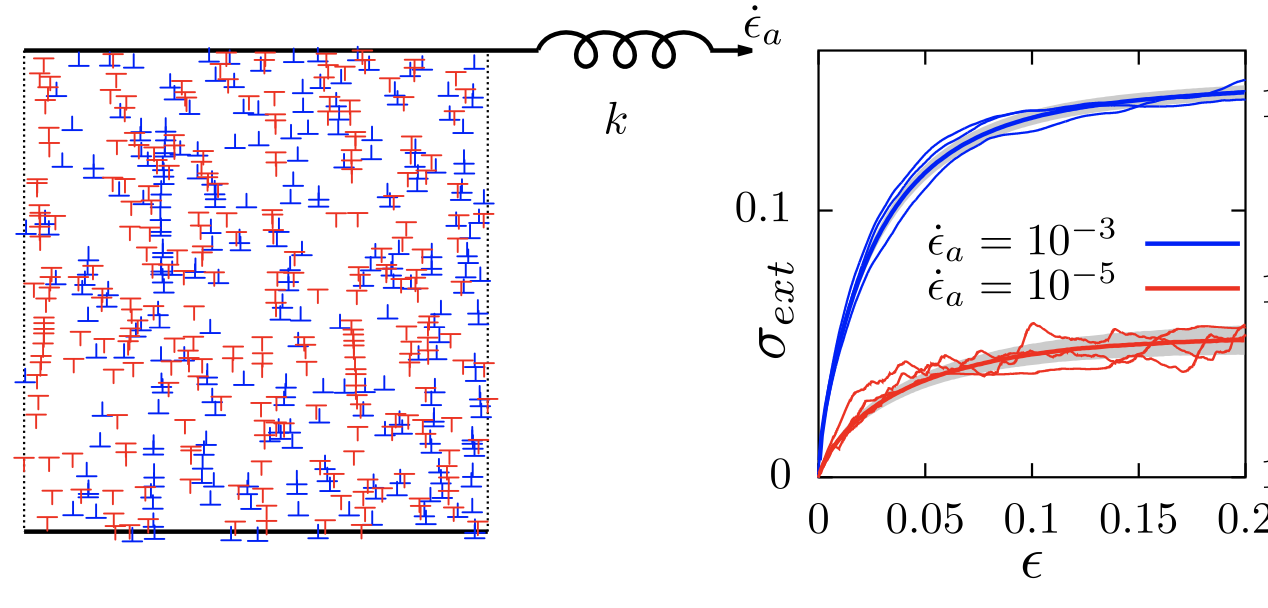Abstract: Predicting the behavior of complex systems is one of the main goals of science. An important example is plastic deformation of micron-scale crystals, a process mediated by collective dynamics of dislocations, manifested as broadly distributed strain bursts and significant sample-to-sample variations in the response to applied loading. Here, by combining large-scale discrete dislocation dynamics simulations and machine learning, we study the problem of predicting the fluctuating stress-strain curves of individual small single crystals subject to strain-controlled loading using features of the initial dislocation configurations as input. Our results reveal an intriguing rate dependence of deformation predictability: For small strains predictability improves with increasing strain rate, while for larger strains the predictability vs strain rate relation becomes nonmonotonic. We show that for small strains the rate dependence of deformation predictability can be captured by considering the fraction of dislocations moving against the direction imposed by the external stress, serving as a measure of strain-rate-dependent complexity of the dislocation dynamics. The nonmonotonic predictability vs strain rate relation for large strains is argued to be related to a transition from fluctuating to smooth plastic flow when strain rate is increased.
M. Mińkowski, D. Kurunczi-Papp, and L. Laurson, Machine learning reveals strain-rate-dependent predictability of discrete dislocation plasticity, Phys. Rev. Materials 6, 023602 (2022).
Congratulations, Marcin and David!

